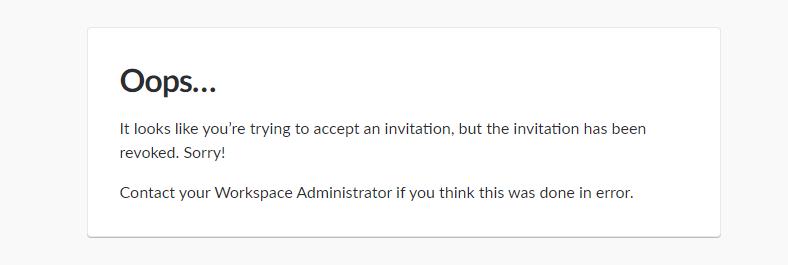mlcourse.ai is an open Machine Learning course by OpenDataScience (ods.ai), led by Yury Kashnitsky (yorko). Having both a Ph.D. degree in applied math and a Kaggle Competitions Master tier, Yury aimed at designing an ML course with a perfect balance between theory and practice. Thus, the course meets you with math formulae in lectures, and a lot of practice in a form of assignments and Kaggle Inclass competitions. Currently, the course is in a self-paced mode. Here we guide you through the self-paced mlcourse.ai.
Bonus: Additionally, you can purchase a Bonus Assignments pack with the best non-demo versions of mlcourse.ai assignments. Select the "Bonus Assignments" tier. Refer to the details of the deal on the main page mlcourse.ai.
Mirrors (:uk:-only): mlcourse.ai (main site), Kaggle Dataset (same notebooks as Kaggle Notebooks)
You are guided through 10 weeks of mlcourse.ai. For each week, from Pandas to Gradient Boosting, instructions are given on which articles to read, lectures to watch, what assignments to accomplish.
This is the list of published articles on medium.com 🇬🇧, habr.com 🇷🇺. Also notebooks in Chinese are mentioned 🇨🇳 and links to Kaggle Notebooks (in English) are given. Icons are clickable.
- Exploratory Data Analysis with Pandas 🇬🇧 🇷🇺 🇨🇳, Kaggle Notebook
- Visual Data Analysis with Python 🇬🇧 🇷🇺 🇨🇳, Kaggle Notebooks: part1, part2
- Classification, Decision Trees and k Nearest Neighbors 🇬🇧 🇷🇺 🇨🇳, Kaggle Notebook
- Linear Classification and Regression 🇬🇧 🇷🇺 🇨🇳, Kaggle Notebooks: part1, part2, part3, part4, part5
- Bagging and Random Forest 🇬🇧 🇷🇺 🇨🇳, Kaggle Notebooks: part1, part2, part3
- Feature Engineering and Feature Selection 🇬🇧 🇷🇺 🇨🇳, Kaggle Notebook
- Unsupervised Learning: Principal Component Analysis and Clustering 🇬🇧 🇷🇺 🇨🇳, Kaggle Notebook
- Vowpal Wabbit: Learning with Gigabytes of Data 🇬🇧 🇷🇺 🇨🇳, Kaggle Notebook
- Time Series Analysis with Python, part 1 🇬🇧 🇷🇺 🇨🇳. Predicting future with Facebook Prophet, part 2 🇬🇧, 🇨🇳 Kaggle Notebooks: part1, part2
- Gradient Boosting 🇬🇧 🇷🇺, 🇨🇳, Kaggle Notebook
Videolectures are uploaded to this YouTube playlist. Introduction, video, slides
- Exploratory data analysis with Pandas, video
- Visualization, main plots for EDA, video
- Decision trees: theory and practical part
- Logistic regression: theoretical foundations, practical part (baselines in the "Alice" competition)
- Ensembles and Random Forest – part 1. Classification metrics – part 2. Example of a business task, predicting a customer payment – part 3
- Linear regression and regularization - theory, LASSO & Ridge, LTV prediction - practice
- Unsupervised learning - Principal Component Analysis and Clustering
- Stochastic Gradient Descent for classification and regression - part 1, part 2 TBA
- Time series analysis with Python (ARIMA, Prophet) - video
- Gradient boosting: basic ideas - part 1, key ideas behind Xgboost, LightGBM, and CatBoost + practice - part 2
The following are demo-assignments. Additionally, within the "Bonus Assignments" tier you can get access to non-demo assignments.
- Exploratory data analysis with Pandas, nbviewer, Kaggle Notebook, solution
- Analyzing cardiovascular disease data, nbviewer, Kaggle Notebook, solution
- Decision trees with a toy task and the UCI Adult dataset, nbviewer, Kaggle Notebook, solution
- Sarcasm detection, Kaggle Notebook, solution. Linear Regression as an optimization problem, nbviewer, Kaggle Notebook
- Logistic Regression and Random Forest in the credit scoring problem, nbviewer, Kaggle Notebook, solution
- Exploring OLS, Lasso and Random Forest in a regression task, nbviewer, Kaggle Notebook, solution
- Unsupervised learning, nbviewer, Kaggle Notebook, solution
- Implementing online regressor, nbviewer, Kaggle Notebook, solution
- Time series analysis, nbviewer, Kaggle Notebook, solution
- Beating baseline in a competition, Kaggle Notebook
Additionally, you can purchase a Bonus Assignments pack with the best non-demo versions of mlcourse.ai assignments. Select the "Bonus Assignments" tier on Patreon or a similar tier on Boosty (rus).
Details of the deal
mlcourse.ai is still in self-paced mode but we offer you Bonus Assignments with solutions for a contribution of $17/month. The idea is that you pay for ~1-5 months while studying the course materials, but a single contribution is still fine and opens your access to the bonus pack.
Note: the first payment is charged at the moment of joining the Tier Patreon, and the next payment is charged on the 1st day of the next month, thus it's better to purchase the pack in the 1st half of the month.
mlcourse.ai is never supposed to go fully monetized (it's created in the wonderful open ODS.ai community and will remain open and free) but it'd help to cover some operational costs, and Yury also put in quite some effort into assembling all the best assignments into one pack. Please note that unlike the rest of the course content, Bonus Assignments are copyrighted. Informally, Yury's fine if you share the pack with 2-3 friends but public sharing of the Bonus Assignments pack is prohibited.
The bonus pack contains 10 assignments, in some of them you are challenged to beat a baseline in a Kaggle competition under thorough guidance ("Alice" and "Medium") or implement an algorithm from scratch -- efficient stochastic gradient descent classifier and gradient boosting.
- Catch Me If You Can: Intruder Detection through Webpage Session Tracking. Kaggle Inclass
- Predicting popularity of a Medium article. Kaggle Inclass
- DotA 2 winner prediction. Kaggle Inclass
If you happen to cite mlcourse.ai in your work, you can use this BibTeX record:
@misc{mlcourse_ai,
author = {Kashnitsky, Yury},
title = {mlcourse.ai – Open Machine Learning Course},
year = {2020},
publisher = {GitHub},
journal = {GitHub repository},
howpublished = {\url{https://github.com/Yorko/mlcourse.ai}},
}
You can join the Singularis.ai Slack community to ask questions on the course materials. The community is mostly Russian-speaking but questions in English are still welcome.

















